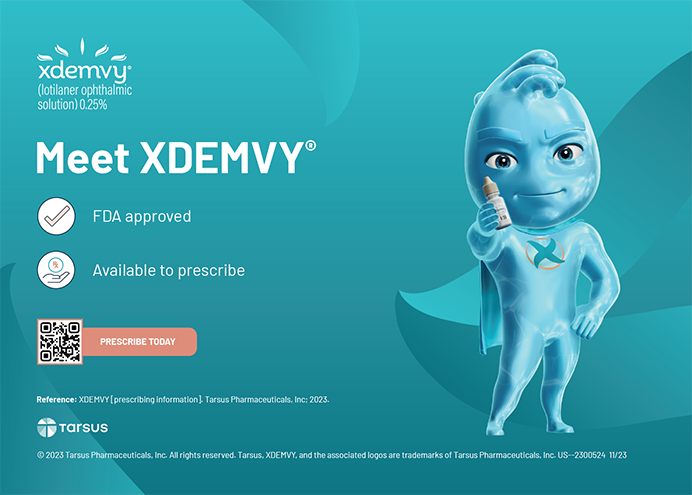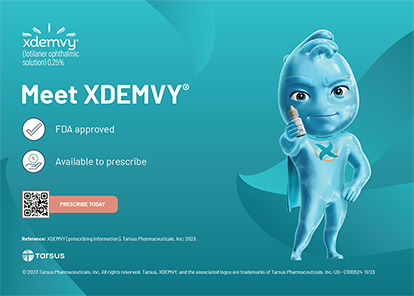A recent ASCRS survey about members’ use of smartphones indicated that approximately 83% of members, domestic as well as international, currently use a smartphone or other Web-enabled device.How have these technological platforms changed the way you handle certain aspects of your professional responsibilities? What features do you use and like the most?
ELIZABETH A. DAVIS, MD
I have an iPhone (Apple, Inc., Cupertino, CA). I appreciate the benefits it affords me professionally. I use my phone most often for e-mail and texting to correspond quickly and efficiently with my colleagues, partners, office staff, industry professionals, friends, and family. I also research medical topics and access online journals. I can view my appointment calendar, which is invaluable. The phone reminds me of when and where I need to be, particularly at busy meetings like the ASCRS and AAO. On a personal note, I use the iPhone as my alarm clock, to listen to music downloaded from iTunes as well as identify songs with the Shazam application, monitor the weather, follow the stock market, read the daily news, make dinner reservations, view movie listings and locations, and get driving directions.
JOHN A. HOVANESIAN, MD
Smartphone technology has broken barriers in communicating with other doctors. For urgent matters, we can contact each other directly on our mobile phones instead of calling the office landline and reaching a receptionist. For quick communication, we can send short message service (SMS) messages, causing only a minor interruption for the recipient. When dictating letters in the exam lane, I can look up a referring doctor’s address and fax information quickly on the mobile Web. I have also found the instant availability of drug information through phone applications like Epocrates to be useful.
JAMES A. KATZ, MD
My smartphone is a miniature computer that also makes phone calls. The convenience of communicating by e-mail or text, from any location, has shortened the time required to access or share information. Staff announcements are readily available, and colleagues can be contacted directly by cell phone or text, rather than be paged by the receptionist. I use the calendar program to update my schedule regularly, which is automatically synced to my computer and is always available to me. I constantly refer to applications such as Medscape and Epocrates to immediately obtain drug information.
MANUS C. KRAFF, MD
The iPad (Apple, Inc.) is a new device that is capturing everyone’s imagination. I was fortunate to preorder an iPad and receive my first one (I now own six) on Apple’s initial day of delivery. At first, the iPad was just a new toy, but as I became more familiar with the device, I realized that a person is only limited by his or her imagination and creativity when using it. I use my iPads at home to control practically everything—the television, lights, thermostat, opening and closing the shades, and the movie library.
I also use the iPad in the office because it is a fantastic educational tool. I downloaded several surgical procedures that I recorded with a point-and-shoot camera to the iPad. The quality of the surgical videos is excellent, as is the audio. The videos last 7 to 8 minutes. They are usually unedited with excellent quality. I have also downloaded interviews I conducted with patients postoperatively. During a consultation with new patients, I leave the room while they view the interviews on the iPad. When I return, the patient understands the issues involved and can ask pointed questions. It will soon be possible to create a presentation for a meeting using the iPad. What a toy!
WILLIAM B. TRATTLER, MD
Technology has increased my efficiency in my practice. One of my favorite recent purchases is the Verizon MiFi (Verizon, New York, NY), which is a wireless network that allows up to five mobile devices to connect to the Internet. Now, I can connect to the Internet with my laptop when traveling, and other family members can connect with an iPad or an additional laptop. I use the iPhone to stay up to date with my e-mails and to view documents or photographs posted on Kera-net or the ASCRS cataract and refractive e-mail discussion groups.
I also use text messaging with my staff. For example, when I am at my surgery center, I communicate with my technicians or study coordinator via text messaging. I expect that our practice will eventually adopt electronic medical records, so I will use mobile technology to view patients’ records or e-prescribe. This means, to truly take a vacation, I will have to travel to a remote location where wireless networks are not available.
Section editor John F. Doane, MD, is in private practice with Discover Vision Centers in Kansas City, Missouri, and he is a clinical assistant professor with the Department of Ophthalmology, Kansas University Medical Center in Kansas City, Kansas. Dr. Doane may be reached at (816) 478-1230; jdoane@discovervision.com.
Elizabeth A. Davis, MD, is an adjunct clinical assistant professor of ophthalmology at the University of Minnesota and a partner and medical director of the Surgery Center at Minnesota Eye Consultants. She acknowledged no financial interest in the product or company she mentioned. Dr. Davis may be reached at (952) 888-5800.
John A. Hovanesian, MD, is in private practice at Harvard Eye Associates in Laguna Beach, California. He is also a clinical instructor at the UCLA Jules Stein Institute. He owns stock in Apple, Inc. Dr. Hovanesian may be reached at (949) 951-2020; drhovanesian@harvardeye.com.
James A. Katz, MD, is in private practice at the Midwest Center for Sight in Des Plaines, Illinois. Dr. Katz may be reached at (847) 824-3127; jktaz@tmcfs.com.
Manus C. Kraff, MD, is the founder and president of the Kraff Eye Institute in Chicago, and he is a professor of clinical ophthalmology at Northwestern University Medical School in Evanston, Illinois. He acknowledged no financial interest in the product or company he mentioned. Dr. Kraff may be reached at mckraff@mac.com.
William B. Trattler, MD, is the director of cornea at the Center for Excellence in Eye Care in Miami and the chief medical editor of Eyetube.net. He acknowledged no financial interest in the products or companies he mentioned. Dr. Trattler may be reached at (305) 598-2020; wtrattler@earthlink.net.


